 I recently had the pleasure of spending 4 days shooting with a Hasselblad H3D-39 digital SLR camera with 80mm lens – pictured on the the left alongside my Canon 5D with 17-40mm lens.
I recently had the pleasure of spending 4 days shooting with a Hasselblad H3D-39 digital SLR camera with 80mm lens – pictured on the the left alongside my Canon 5D with 17-40mm lens.
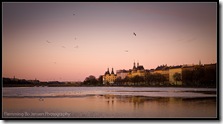 Weighing in at around 2,5 kilos with the 80mm lens attached, capturing light on a 39 megapixel medium format 48x36mm digital back and costing an arm and a leg (about 20,000 Euros or 38,000 AUD) this extraordinarily looking beast of a camera makes a strong first impression!
Weighing in at around 2,5 kilos with the 80mm lens attached, capturing light on a 39 megapixel medium format 48x36mm digital back and costing an arm and a leg (about 20,000 Euros or 38,000 AUD) this extraordinarily looking beast of a camera makes a strong first impression!
Click ‘Keep reading’ below to read all about my Hasselblad Experience.
Hasselblad H3D-39 first impressions
 As the photo on the right shows; the camera with the 80mm lens attached is actually not that much bigger than a Canon 5D. Then you pick it up. Now you realise it is actually a large square heavy box with a pistol grip and quite a bit larger than a 5D sized DSLR!
As the photo on the right shows; the camera with the 80mm lens attached is actually not that much bigger than a Canon 5D. Then you pick it up. Now you realise it is actually a large square heavy box with a pistol grip and quite a bit larger than a 5D sized DSLR!
Then you switch it on and learn:
- It’s a bit slow to ‘boot’ taking several seconds before a beep tells you it’s ready to serve.
- If you’re me; you look through the viewfinder then realise the lens cap is on! (I do it so often it must be a mental block!)
- Lens cap off; you peek again and discover a gorgeous large and bright viewfinder! There’s a huge difference between a 35mm and medium format viewfinder, it’s such a nice big and bright view.
- Pistol grip is really good for handholding this “big box” with very good ergonomics (ergonometrics for all you ‘The Castle’ fans out there!)
- There’s a small wheel at your thumb for changing exposure and another wheel at your index finger for aperture. Simple and brilliant!
- The menu system is easy enough to use and I quickly formatted a 4 GB Sandisk Extreme III card in it and had no problems.
- I shot a few test shots in my living room and the mirror slap on such a huge mirror is very noticeable – and loud!
- There is a dedicated mirror up and down button. Very cool feature, Canon take notice! Can we please have a mirror lock up button instead of hiding it in a menu!
- Anything above 1 second exposure is just bulb. Come on Hasselblad, something this expensive and you can’t program in longer exposures than 1 second, I need to bring my own stop watch?
- It’s very easy to use; I had no problems learning it in 10 seconds without a manual. Except for one thing: how the bloody hell do I see the battery level? Meant I ran out of battery on the first shoot as only a google search on day 2 revealed that you press and hold down the "illuminate lcd screen” button to see battery level.
- The screen on the back is a joke! I know most Hasselblad photographers will probably shoot in the studio with the camera tethered to a computer and won’t care about the screen. Still; it cost a fortune and the lousy screen on the back is a leftover from some mobile phone!
- I miss the RGB histogram available on my 5D; the Hasselblad only seem to offer a luminance histogram which is of no use when you’re checking if the red channel is alright or killed!
Hasselblad in the field
This is not a test nor a review; it is simply my experience using the Hasselblad for my type of photography. I didn’t spend days in a studio shooting test patterns and comparing high iso noise at 500% magnification. I secured the camera in my Kata R-103 backpack and brought my Gitzo tripod and went in search of some landscapes. Then I remembered I’m not in Australia. So I went in search of some cityscapes. Then I remembered it’s autumn. So I braved the elements and had my fingers and face turned into ice for you dear readers!
I only had the 80mm lens for the camera which equates to about a 45mm lens on a 35mm camera. The Hasselblad shoots in a 4:3 aspect ratio, an alien format for me as I usually shoot at 17mm and in a panoramic crop at least 2:1 . Being forced to see the world at 45mm and in a 4:3 view was like looking through a pair of binoculars for me; but a good learning experience. I do hope I can test the Hasselblad 28mm lens some day and get some wide angle.
I didn’t have a cable release; so I used the self timer function “mirror + delay” which opens the mirror then waits 10 seconds before exposing. Ensures that the image has no mirror slap effects or blur from my cold shaking fingers touching the camera!
All the following shots were converted to DNG using Hasselblad FlexColor software and then processed in Adobe Lightroom 2.1
Day 1
One of my first shots was on a cold rainy overcast gray dark and depressing (you get the picture) afternoon in Copenhagen. I only got in about 10 shots before it started pouring down and this is the first one:
It isn’t terribly sharp at 100% and I was disappointed to see this when I looked at the raw file. It’s shot at f/19 and I soon learned that shooting at f/16 or smaller brings a lot of diffraction, at least with this 80mm lens. I expected a bit of diffraction but am surprised it’s this bad. The difference between say f/8 and f/32 is night and day really and much more diffraction than any lens on my Canon 5D. I would have expected a larger sensor to have less diffraction; I’m slightly puzzled by this. This photo is uncropped in the 4:3 format and shows how awkward I find composing in this format.
The real advantage of medium format is the much increased dynamic range. A 35mm camera can perhaps see 7-8 stops of dynamic range where as a medium format can capture 10-11 stops; a huge difference. I should have explored this more in a studio with models and lights I guess; but I don’t have any studios, models or lights handy! I am an outdoor photographer.
It stopped raining for 2 minutes and the only really high dynamic range shot I managed was this sunset shot straight into the light. The raw file shows that the Hasselblad handles details in both highlights and shadows very well, much better than my 5D in a scene as this with huge dynamic range:
Day 2
The next day of shooting was even colder (I deserve a medal for braving this) and had really boring light; albeit a very interesting cloud formation at sunset very cleanly slicing the sky in half:
This is 2 shots from the Hasselblad stitched in PTgui to form a nice pano showing the nice cloud formation. Only managed a few shots this day at Lake Peblinge in terrible light. Didn’t learn much except the Hasselblad body being mostly metal gets really cold!
Day 3
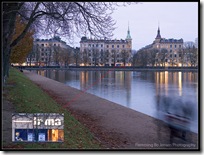 A new record in greyness. Cold ‘n dark and grey. 10 stops of medium format dynamic range not needed, the whole world is 18% grey. So I shot a lot of test shots at the lakes and this is when I finally got some razor sharp results and learned just how bad diffraction gets on this rig. At f/16 and smaller apertures diffraction is extremely noticeable. The image on right is at f/8 and the 100% cut-out shows the sign is now quite sharp!
A new record in greyness. Cold ‘n dark and grey. 10 stops of medium format dynamic range not needed, the whole world is 18% grey. So I shot a lot of test shots at the lakes and this is when I finally got some razor sharp results and learned just how bad diffraction gets on this rig. At f/16 and smaller apertures diffraction is extremely noticeable. The image on right is at f/8 and the 100% cut-out shows the sign is now quite sharp!
Day 4
Sunshine. Had almost forgotten what it was like. Booked for IT-consulting the whole day; I only managed to catch the last bit of light at the lakes resulting in these sunset and dusk images:
The sun meant I finally had some light and some tones in the sky and the buildings and it’s clear that the Hasselblad is very good at capturing the many soft tones of golden dusk light with it’s sensor capturing 16-bit levels of colour.
The RAW files from a Hasselblad HD3-39
Hasselblad being Hasselblad, you of course have to use Hasselblad software to process the files. The RAW files from the H3D cannot be read by any software except Hasselblad’s own FlexColor software supplied with the camera. Fortunately FlexColor allows you to convert everything to the DNG format which can be read by other programs. So if you want to use anything else than FlexColor including opening the files in Photoshop you have to convert every RAW file first. Bit of a hassle (haha!)
I’ve used FlexColor with the Hasselblad scanners, but chose to convert to DNG and develop in Adobe Lightroom 2.1 my RAW converter of choice. Now Lightroom is not the quickest as it is, even on fast PC like mine but feed it 50 megabyte DNG files and you’ll be cursing the screen now and then!
The 39 megapixel shots results in a RAW file around 50 MB and a pixel size of 7216 x 5412 ! A very nice big digital photo and the RAW files can certainly be gorgeous. Looking at the RAW files it’s clear that I never really captured a scene that allowed the Hasselblad to truly shine and outshine my Canon 5D. I learned how to shoot sharp and did get one against-the-light scene and a dusk shot with many soft levels of colours. Still; I feel there must be more. I didn’t capture a RAW file that truly shows what this camera can do.
My Hasselblad Experience
Again; this is not a review just my experience using a medium format Hasselblad as a 35mm landscape photographer. And having used it for 4 days I am very much a novice with this camera and am sure I could get much better results after a few months of use. Still; I am amazed you can get medium format digital photos with something not much bigger than a 35mm dslr camera. You don’t need a mega view camera if you need medium format quality. It comes at a hefty price though and with the upcoming Canon 5D Mk II at 21 megapixel and the Sony A900 full frame 25 megapixel camera the 35mm cameras are closing in on medium format. Of course Hasselblad has answered back having introduced a 50 megapixel back and Phase-One has them beat with a 60 megapixel back! You don’t get the pixel size nor the dynamic range of medium format on 35mm of course and I’m thinking if you need a Hasselblad for your studio work then you can probably afford it.
For my type of landscape photography I prefer a 35mm DSLR (although I wish they made one in a 3:1 panoramic format). The Hasselblad is big and heavy to drag around in the outback and I’d run out of power once a day (battery power is not great!). The 4:3 format is not for me either; I would need to stitch every shot or crop half of it. Also; it definitely seems built for the studio, not for the outback. There’s a lot of places dust can get in including some air vents around the sensor. Those 39 megapixel files are gorgeous though, could definitely do some amazing landscape prints where even my stitched 5D panoramas would come up short.
A great and fun learning experience to use digital medium format but I am still convinced my next camera is the Canon 5D Mk II – not that I could afford this Hasselblad anyway. I can get about 6 or 7 Canon 5D Mk II for the same price! I wouldn’t mind having those 39 megapixels and that viewfinder though!
Finally; A million thanks to Joan and Jesper for letting me use their camera!
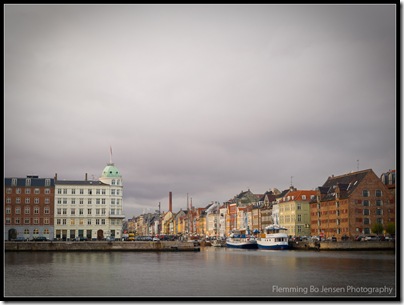
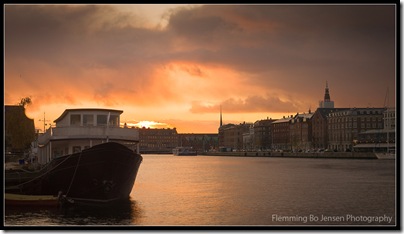

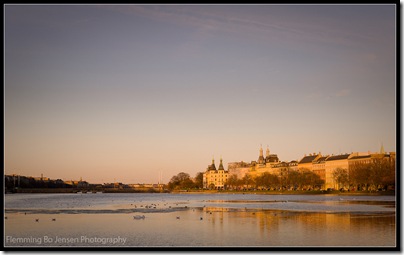
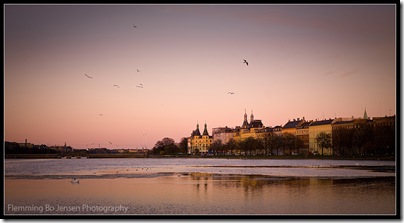
23 Comments on “My Hasselblad Experience”
I had a good giggle reading this post.
Super curious though – at 50Mb per RAW file, how many gazillion memory cards did you have to bring with you??
Yeah it looks like a lot of fun, but it sounds like it really lacks little functions, such as showing its battery power and the RGB channels that you really should be getting for that kind of money!
Ohwell its not gonna be next camera! So i wont have to worry about it!
Cheers for the post
Flemming having used Hasselblad for many years and selling it a few years ago to my regret, I know how you must have loved using such a great camera from a well and trusted company, thier lens are amazingly sharp and crisp and I hope one day to own one of the old style Blads once again. But that will have to wait for a while, as having my own house and mortgage repayments will slow that down for me for now.
Charlene, thanks 😀 I own about 40 gigs of memory cards but didn't bring more than a 4 and 8 gig with me. I didn't shoot that many shots per day testing the camera.
Dylan, cheers mate. It's a funny camera, it has some super features and some features missing that is on every other slr out there.
Casey, yeah I know what you mean and I think forgot to talk about the quality. Everything is just amazingly quality. The build quality, the lenses etc. Even the lens hood is metal, not plastic!
lucky guy getting to play with things like that Flem.
must be frustrating when you don't get enough time to master it though. still not bad results though!!
i'm glad you manage to forget your cap sometimes…. something i do all the time too haha. get too distracted with the scene before me
Thanks Stephen. Yeah it's great fun getting to play with some nice gear! Anyone wanna lend me a 8×10 view camera for a test?
I forget to take off the lens-cap all the time! As I've said before, think my tripod wants a sign saying "I'm with stupid!"
Interesting Flemming. You'd Be right about the build quality , they must be good they were the camera of choice for the astronauts when on the moon.
Yeah how cool is it as a camera manufacturer to have a link called 'Space Cameras' !!!!! http://www.hasselblad.com/about-hasselblad/hassel…
Surprised to hear about the lack of features too. I thought at that sort of price range it would have absolutely everything sorted out.
Was quite intrigued by the detail in the shots, even if they weren't amazing photos by your high standards. I suppose no matter how good 35mm gets, it'll never touch a medium format for depth and detail.
Thanks Rhys, glad you like my work and yes the lack of features is a bit strange. Again; most people using this camera are perhaps studio photographers but then there's a lot of landscape photographers using Hasselblad and it's a pain having to manually time any exposure longer than 1 second. And we like that RGB histogram to check those red tones at sunset etc. There is a new H3D out, the H3D-II and this may have all the features I missed.
As long as medium format offers more pixels and more dynamic range it will always have a place and offer something 35mm cannot. With the new 60megapixel backs though they don't make the pixels so small they loose dynamic range.
Good news Flemming, I am going to Darwin for 10 days for work and the across to Perth for 5 days, so I hope to maybe get some sweet storm activity and a couple of nice photos of Perth while I am there..
Casey.
Hi Flemming,
I once saw the H3D-39 in action. It was part of a photo shoot for Tourism Victoria, the photographer http://www.simonharsent.com/ had some nice equipment. The Camera was plug directly into the Mac and images directly uploaded to lightroom where the camera assistant was giving instruction of what was needed. Fairly fascinating. I can remember him using the 35mm on it.
Tom
35mm would be quite wide (about 19mm in 35mm terms) on a Hasselblad, I'd love to test it with the new Hasselblad 28mm !
I didn't like my experience with the H3D. Thats why I got into stitching. There are some benefits but not that great for the price.
I agree Christian, it's a lot of money compared to 35mm and stitching panoramas! If you're shooting portraits I can see why as it's pretty hard to stitch a portrait shoot! But for stationary landscapes we can often get away with stitching our way to 39 megapixels!
Hi Flemming,
read your "REVIEW" H3D 39, and would like to correct a couple of points in your article.
1) Shoots up to 32 seconds before Bulb is needed.
2) Battery level indicator is simple and descriebed
in the users manuel.
3)I`ve yet to find a problem with dust,because unlike my Nikons,I can easily remove the Back
and clean the Sensor.
4)the new Phocus software allows you to handel
most problems, for example Moire,Noise etc,much better then Photoshop .
Love your photos. regards JP
Hi John,
Thanks very much for your post and for your compliment, glad you like my shots.
1) The H3D39 I borrowed didn't I am quite sure of that, maybe it needed newer firmware I guess.
2) It was a loaner I didn't have the manual 🙂 Who reads the manual anyway 🙂
3) Again, it was a loaner and it had plenty of sensor dust. But yeah, must be much easier to clean, thanks for clearing that up.
4) Yeah I guess to get the full Hasselblad quality you need the Hasselblad software as well, I don't have the Phocus software.
Hi Flemming,
I have Hasselblad H3DII-39, still i didn't use it much in landscapes as my 80mm is not great wide for that, but for portraits ans some products it is amazing incredible camera, even i tested it against my 1DsIII and it was the winner, just i am planning to buy 28mm then i will do more landscape photography.
I can imagine in a studio setup you would get some incredible portraits. For landscapes I wasn't all that impressed I must admit, for the price I expected more. Still, never got to test it properly, wouldn't mind bringing one with a 28mm lens with me to Africa!
Hi Flemming,
Thanks for your write-up on your experience with the Hasselblad. I was/am seriously considering buying it for landscape photography – particularly in the high altitudes. After reading your comments, I get the feeling that I am better off with stitching shots from my 1DS MK III.
You're welcome, hope it was useful. Remember it is not a review, just my experiences of 4 days shooting with the 'blad. If you already have a 1DS Mk III yeah I would go with stitching as well!
thanks for all the information! I have been contemplating buying one! Thanks!!
I have read so many content regarding the blogger lovers except
this article is genuinely a nice post, keep it up.